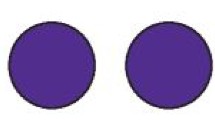Abstract
Data sources
The following databases were searched: Cochrane Oral Health Trial Register, Cochrane central register for controlled trials, Medline Ovid and Embase Ovid. The following were searched for ongoing trials: US National Institutes of Health Trials Register and World Health Organization International Clinical Trials Registry Platform. No language, publication year or publication status restrictions were imposed.
Study selection
Randomised controlled trials (RCTs) and controlled clinical trials (CCTs) of orthodontic treatment to correct deep bite and retroclined upper front teeth were included. Two independent reviewers scanned and reviewed all papers and abstracts to be included. When necessary, primary authors were contacted, and additional or missing information was obtained. Trials which recruited participants 16 years or less without surgical intervention to correct their class II malocclusion were to be included. Trials that included participants with cleft lip/palate or any other craniofacial syndrome were excluded.
Data extraction and synthesis
If data were to be selected, all data would have been complied into a customised data collection form. The following were to be included in the analysis; year of publication, country of origin, setting and source of study funding and details on the type of interventions including appliance type. Additionally, details of the participants including demographic characteristics, criteria for inclusion and exclusion and sample size by study group were to be taken into account. Details of the outcomes reported, including method of assessment, time intervals, details of withdrawals by study group, details of outcomes, including measures and timepoints were also supposed to be compiled for completeness. The risk of bias was planned to be reviewed. Measurements of treatment effect including risk ratios and numbers needed to treat would have been included. A 95% confidence interval and assessment of heterogeneity were to be explored. Data synthesis was planned to follow the Cochrane statistical guidelines using Review Manager Software.
Results
One thousand three hundred and forty-four records were identified through database searching and one extra article was identified through other sources. Eight hundred and fifty-seven records were isolated after duplicates were removed. All records were rejected. No articles were selected for inclusion. No RCTs or CCTs were found assessing orthodontic treatment without the removal of permanent teeth versus treatment with extraction of permanent teeth versus no treatment at all. Consequently, it is impossible to derive any evidence-based support for clinicians for the treatment of class II division 2 malocclusion in children.
Conclusions
There is no evidence from clinical trials to recommend or discourage any type of orthodontic treatment to correct Class II division 2 malocclusion in children. This situation seems unlikely to change as trials to evaluate the best management of Class II division 2 malocclusion are challenging to design and conduct due to low prevalence, difficulties with recruitment and ethical issues with randomisation.
Similar content being viewed by others
Commentary
The systematic review published in the Cochrane Database of Systematic Reviews had the task of reviewing and updating the evidence of orthodontic treatment modalities in the class II division 2 patient. Class II division 2 patients have a characteristically deep bite with retroclined upper front teeth. The extraction vs non-extraction debate has plagued the field of orthodontics since its inception at the turn of the twentieth century. Edward Angle, widely considered the father of orthodontics, was a staunch believer in non-extraction therapy. One of his brightest disciples, Charles Tweed, soon became opposed to non-extraction therapy and completed many cases in which extraction of the four first premolar teeth was deemed necessary.1 The authors of this systematic review concluded that there was no evidence to support either treatment modality. Interestingly, the authors isolated 857 articles using the aforementioned databases. However, the authors failed to elucidate on the exclusion criteria used to determine that these particular articles were of no use. This could have been done in the form of a table or flow chart, as many systematic reviews have adopted. Furthermore, the article's topic specificity of RCTs and CCTs of class II division 2 may have limited the ability to arrive at a more concrete solution. A recent 2018 systematic review of 14 retrospective studies in the American Journal of Orthodontics and Dentofacial Orthopedics aimed to assess the effects of four premolar extractions on the vertical dimension of the face.2 The 14 studies included were a combination of class I, II and III patients that received four premolar extractions. Two retrospective studies included were specifically on hypodivergent, class II patients. With the limitations of the evidence, the article failed to find any difference in the skeletal vertical dimension of extraction and non-extraction treatment protocols. Moreover, a 2012 systematic review done by the same author of the Cochrane review and published in the American Journal of Orthodontics and Dentofacial Orthopedics on post-treatment stability of class II division II treatment was indecisive about the effect of extraction vs non-extraction therapy. No clear evidence favoured one treatment protocol over the other. However, it was recommended to be prudent when extracting in cases of a thin upper lip and/or an increased nasolabial angle to prevent possible adverse effects on profile.
Lastly, a 2012 retrospective study published in The Art and Practice of Dentofacial Enhancement studying the long-term stability of four premolar extractions in class II patients failed to find any difference in post-treatment parameters between the two treatment protocols.4
Long-term stability such as overjet, overbite, canine and molar relationships were similar in all the studies. The expectation for a randomised clinical trial on this topic may not be feasible and justifiable. Despite some limitations of this review, the current evidence does not support one treatment modality over the other. Further investigation is required to further establish the answer to this clinical dilemma. It is important for orthodontists to establish the success of treatment modalities so that stability of treatment outcomes can be assured. This will ensure a more consistent and evidence-based approach to the practice of orthodontics.
References
De Oliveira Rueellas AC, De Oliveira RM, Romano FL, Pithon MM, Dos Santos RL . Tooth extraction in orthodontics: an evaluation of diagnostic elements. Dental Press J Orthod 2010; 15:134–157. Available at http://www.scielo.br/pdf/dpjo/v15n3/en_17.pdf (accessed September 2018).
Kouvelis G, Dritsas K, Doulis I, Kloukos D, Gkantidis N . Effect of orthodontic treatment with 4 premolar extractions compared with nonextraction treatment on the vertical dimension of the face: A systematic review Am J Orthod Dentofacial Orthop 2018; 154:175–187. doi: 10.1016/j.ajodo.2018.03.007
Millet DT, Cunningham SJ, O'Brien KD, Benson PE, Oliveira CM . Treatment and stability of Class II division 2 malocclusion in children and adolescents: a systematic review. Am J Orthod Dentofacial Orthop 2012; 142:159–169.
Janson G, Araki J, Camardella LT . Posttreatment stability in Class II nonextraction and maxillary premolar extraction protocol. Orthodontics (Chic) 2012; 13:12–21.
Author information
Authors and Affiliations
Additional information
Address for correspondence: Luisa Fernandez Mauleffinch, Managing Editor, Cochrane Oral Health Group, School of Dentistry, The University of Manchester, JR Moore Building, Oxford Road, Manchester, M13 9PL, UK. E-mail: luisa.fernandez@manchester.ac.uk
Millett DT, Cunningham SJ, O'Brien KD, Benson PE, de Oliveira CM. Orthodontic treatment for deep bite and retroclined upper front teeth in children. Cochrane Database Syst Rev 2017; 10: Art. No. CD005972. DOI: 10.1002/14651858.CD005972.pub3.
Rights and permissions
About this article
Cite this article
Goldstein, B., Veitz-Keenan, A. Extraction or non-extraction treatment for Class II division 2 malocclusion?. Evid Based Dent 19, 88–89 (2018). https://doi.org/10.1038/sj.ebd.6401329
Published:
Issue Date:
DOI: https://doi.org/10.1038/sj.ebd.6401329



